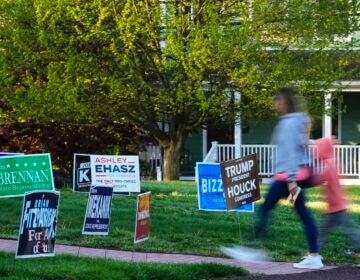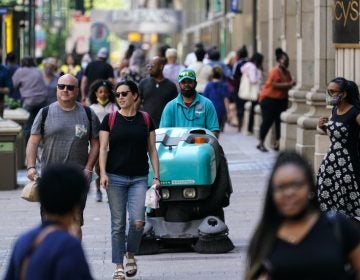East Falls group helps pave the way for age-friendly city recognition in Philadelphia
Philadelphia is on its way to becoming recognized as an age-friendly city.
Lydia Hernandez Velez, Philadelphia’s Deputy Managing Director for Aging, was present at East Falls Village’s open house last week and announced that the city is currently being assessed by the World Health Organization for the age-friendly designation.
The initiative began in 2006, when WHO began a study of cities and the qualities that made them accessible. According to WHO documents, age-friendly cities are pedestrian friendly, have various services located in close proximity to each other, have convenient public transportation, and abound with both social and civic opportunities.
In 2010, WHO initiated its Global Network of Age-Friendly Cities, and two in the U.S. were included: New York and Portland, OR. Philadelphia joined the process for consideration in December 2011.
“In the United States, Portland and New York are the only two cities that have that designation,” said Velez. “We hope to be number three.”
Keeping seniors safe, connected and involved in civic discourse
According to WHO, the world is rapidly aging. The number of people aged 60 and over as a proportion of the global population will double from 11-percent in 2006 to 22-percent by 2050. At the same time, cities account for a majority of the world’s population: As of 2007, over half of the global population now lives in cities.
In Philadelphia, Velez said that the administration is attuned to senior issues. She joined in 2010, and said that her principal role is to find answers to the question, “What about the seniors?”
With the city’s over-fifty population expected to approach 450,000 in the next five years, Velez said that strategic planning is being undertaken, and that Mayor Michael Nutter has articulated the desire for a cohesive vision.
“We want to make sure that seniors are safe, connected, and actively participating in civic discourse,” she said. “We can’t be a vibrant city going forward if any sector is not at the table.”
Velez’s department is offering several programs to serve seniors: The Apprise program, which assists with Medicare selection, and the Senior Community Service Employment Program, which assists in finding jobs for seniors.
At the local level, the city is looking for ways for residents to communicate and support each other.
“How do we encourage our neighborhoods to talk and have services for their neighbors?” asked Velez.”Part of our strategic plan includes supporting efforts like East Falls Village.”
Securing the age-friendly status locally
With EFV in its second year of operation, it’s helping secure East Falls’ status as an age-friendly neighborhood.
As Charlie Day, chair of EFV operating group, pointed out, EFV “is not a piece of real estate” – it’s designed to enhance a sense of community and give support for people who choose to age in place.
EFV officially started in July of 2011. Since then, membership has risen to 91 households and 137 individuals.
Beyond a general mission of enhancing the lives of seniors, EFV provides support, services and programs for its members.
One of the most popular services offered by the group so far is their “vetted vendors,” which is a reference list of service providers that have performed ably for EFV members.
EFV is an all-volunteer group and is an official committee of the East Falls Community Council.
The Boston model
Providing context for EFV’s efforts was an AARP video detailing Beacon Hill Village, the premier aging-in-place organization located in Boston. BHV serves an extended community that includes Beacon Hill, Back Bay, North End, South End and surrounding neighborhoods.
According to BHV officials, their organization serves over 400 members aged fifty and over. With longevity becoming “the new norm,” AARP surveys suggest that people want to stay in their home as they age and this desire increases with the advancing of years.
Services provided are essentially similar to EFV. One difference is that BHV offers subsidized memberships to 25-percent of its membership, which is not done locally. According to EFV leaders, this is due to its significantly lower membership fee – $125 for an individual compared to $675 in Boston.
Word about BHV’s success seems to be spreading: They claim over 3,000 inquiries from individuals and communities across the U.S. and from 15 other countries. In addition, BHV officials note that their model fulfills a need and is transferable – two points that are being demonstrated in East Falls.
‘It was the best thing that I did’
Mary Flournoy, chair of EFV’s membership committee, said that a recent internal survey received overwhelmingly positive responses from its members.
Susan Smith, a recent retiree and East Falls resident for 30 years, said that her social circle has expanded from the tune of 50 to 75 new people since joining.
“As you grow older, your circle of friends tends to grow smaller, so you have to be intentional about broadening it,” she said. “This is a good way to do it.”
Joan McIlhenny said the EFV has been a “godsend” for her, as a degenerative optical condition has limited her ability to drive, making doctor’s office visits that much more difficult before help was available.
“I was really stuck a year ago,” she related, “so I called, and it was the best thing that I did.”
WHYY is your source for fact-based, in-depth journalism and information. As a nonprofit organization, we rely on financial support from readers like you. Please give today.




